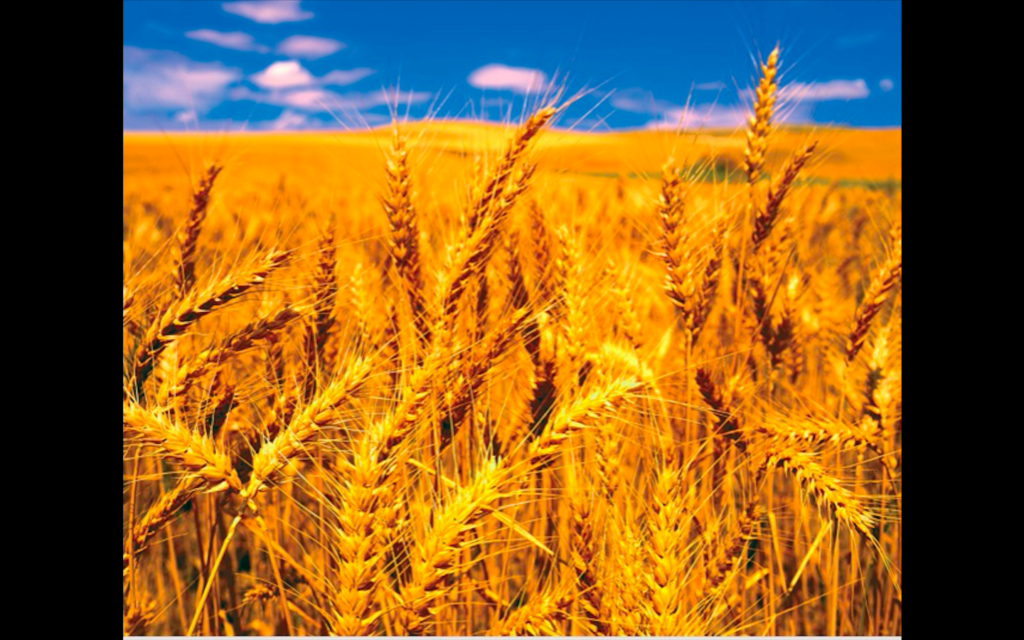
Of all the grains, why is wheat always picked on? Because wheat is our dominant source of gluten protein. Most people don’t eat a lot of rye, barley, spelt, bulgar, or kamut. Wheat accounts for 20% of all calories consumed in our diets. Wheat is everywhere in our diet, often being hidden.
Glutens are the storage proteins of the wheat plant for the germination to form new wheat plants. Gluten is what makes wheat “doughy” (think of someone tossing a pizza, with it stretching more and more with each toss). Gluten is what makes dough stretchable, rollable, spreadable, and twistable. You can’t do this with rice, corn, or any other grain flour.
The problem is, the wheat we consume today is not the same grain our ancestors ground into their daily bread 100 years ago. Agricultural scientists originally dramatically modified wheat using hybridization and cross-breeding techniques in order to decrease the production costs, expand the large-scale production, and increase the yield per acre of wheat (which has required drastic changes in genetic code). Over the past 50 years, over 25,000 new different varieties of wheat strains have been consumed by humans without any safety testing. With hybridization, variation in gluten structure has made its way to humans without the consideration of these safety concerns (wheat gluten proteins undergo a considerable structural change when they’re hybridized or genetically modified). Changes in gluten proteins are not evident by sight, smell, or taste. For many, however, they are evident in their gut.
Gluten has the unique ability to disrupt the tight junctions of the intestine, making our intestine permeable (intestines aren’t meant to be freely permeable). Normally when you eat, nutrition has to be absorbed in the gut, while the rest is discarded (yes, poop and pee). This “leaky gut” syndrome can cause all kinds of symptoms, such as autoimmunity, inflammation, diarrhea, IBS, cramping, abdominal pain, loose stools alternating with constipation, and acid reflux. Eliminate wheat and IBS, acid reflux, and other disorders improve.
Wheat also yields morphine-like compounds that bind to the brain’s opiate receptors, causing a mild euphoria. Get rid of the wheat and you’ll eat fewer calories because you’ll no longer encourage the repetitive consumption of carbs that generate that addictive good feeling (similar to the feeling alcohol gives).
Aside from some fiber, eating 2 slices of whole wheat bread is worse than drinking a soda. First, the scientific technicalities: wheat is 75% amylopectin A and 25% amylose. Both are broken down into glucose and more rapidly absorbed into the bloodstream than nearly any other carbohydrate food! Increased glucose (the “sugar high”) is accompanied by increased insulin, which causes the “sugar low” about 2 hours after consuming a high carb or wheat meal. This sugar low is responsible for your mental fog, fatigue, irritability, and quick increase in hunger after your last meal. Over long periods of time, high blood sugars and insulin cause more fat accumulation, especially in the abdomen. The big belly results from years of consuming foods that trigger insulin, the hormone of fat storage.
Wheat is an appetite stimulant, making you want more cookies, cupcakes, pizza, pretzels, etc. Removing wheat from your diet cuts the biggest problem source of carbs in our modern-day diets and the weight loss can be shocking. Cutting soda and ice cream is obvious for weight loss…it’s the wheat that is counterintuitive. Who knew that wheat was so sneaky?
Personally, I gave up wheat (maybe 98% of it) a few years ago and it’s made a real difference for me. This is the first in a series of articles that, hopefully, you’ll find informative and interesting, allowing you to make better decisions about eating wheat and what it does to your body. The next article will be more specific to diabetes and how wheat affects blood sugar, diabetes, and insulin.
